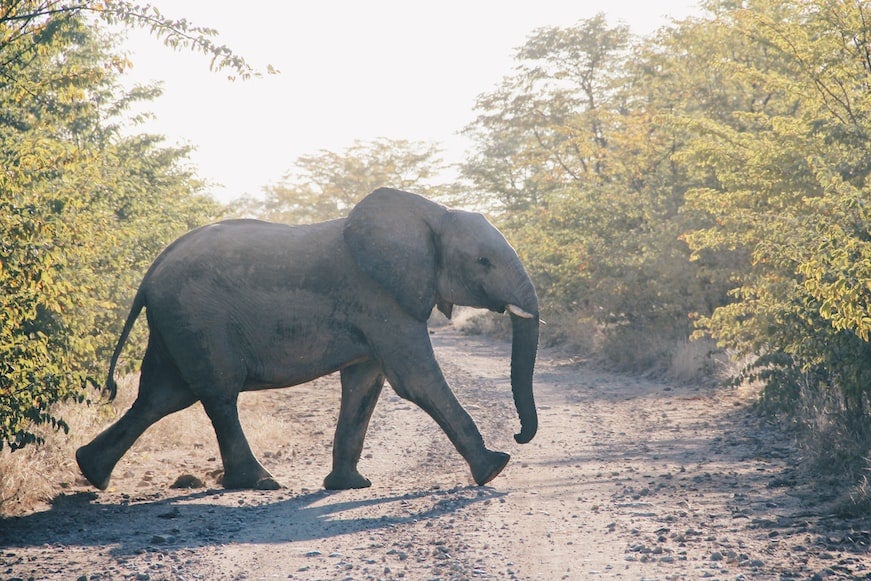Zimbabwe turns new leaf with community projects for wildlife conservation
A community owned tourism camp, supported by park management, generates income and increases tolerance for wildlife in the park

By Farayi Machamire for Zim Morning Post
Creating structures that give communities direct benefit for living adjacent to wildlife remains one of the biggest sticking points between community members, conservancy owners and Governments.
A national park in the south of Zimbabwe is building blocks to help mend broken bridges through establishment of a tented camp whose proceeds are entirely at the disposal of the community.
Bosman’s Community Camp, situated on the shores of Mwenezi River that borders Mozambique and is 100 kilometres away from South Africa’s Kruger National Park, was developed as a tourism and conservation partnership between Malipati Development Trust, Gonarezhou Conservation Trust (GCT) and Chiredzi Rural District Council.
Project inputs were funded by the European Union with additional support from USAID implemented by Sustainable Agriculture Technology.
So far proceeds from the luxurious tented camp have gone towards building a clinic and refurbishing a school in a community area inside Gonarezhou National Park.
Community members say the initiative is helping to fight wildlife crime as the monetary value of the project encourages communities to be active custodians of the land.
“It is helping to encourage communities to share responsibilities for wildlife conservation and management,” said Malipati Development Trust chairperson, Lawrence Moyo.
At least one community member drawn from the 12 villages of ward 15 in Gonarezhou National Park sit as a board member of Malipati Development Trust, helping to make decisions which directly benefit the villages they represent.
“Each board member brings the concerns of their various villages and then we say let’s look into our coffers,” Moyo said.
“We want to recreate the same tented camp in five other locations within Gonarezhou. The partnership has great potential to turn around the lives of many ordinary people living within the Park.”
The Park is home to over 11,500 elephants, one of the highest densities of pachyderms in any protected area in Africa.
GCT who manage the Park on a day-to-day basis are expecting to get a spillover of tourists coming in from Kruger National Park through a proposed tourism border between Zimbabwe and South Africa.
The border is expected to open in April next year.
GCT Area Manager Evious Mpofu believes the identified new crossing will boost uptake for the tented camps while also enhancing tourism beneficiation linked to the wildlife economy between the Great Kruger protected area network and the Gonarezhou National Park as well as the Limpopo National Park in Mozambique.
Gonarezhou National Park forms part of the Great Limpopo Transfrontier Park, which links Gonarezhou with the Kruger National Park in South Africa and the Limpopo National Park in Mozambique. Animals can move freely between the three sanctuaries.
At the moment, South Africa and Zimbabwe share the Beitbridge Port of Entry as the only land port, and occasionally informal borders are opened at Shashe and Tshikwalakwala for seasonal tourism events.
The tented camp is integral to efforts aimed at tapping into the Great Limpopo Transfrontier Park tourist market, says Mpofu.
“We are trying to establish a crossing where tourists from SA will come directly into Gonarezhou. It’s less than 100 kms from Kruger which is getting more than two million visitors a year and if we can get 10 percent of that it will go a long way in benefiting the community,” Mpofu said.
Zimbabwe registered 352,719 tourist arrivals during the first half of 2022. Domestic visits into the national parks sat at 172,481 during the period January to May 2022. The proposed border is among a raft of initiatives authorities hope will be a catalyst to grow the sector.
Meanwhile, GCT oversees various other community engagement projects in the Park that also include Chilojo Club which revolves around conservation education, mitigation of human-wildlife conflict and general outreach in the communities that live alongside Gonarezhou National Park.
The projects offer communal lands opportunities to both benefit from wildlife and to be active custodians of the land and share responsibilities for wildlife conservation and management.
This article is reproduced here as part of the African Conservation Journalism Programme, funded in Angola, Botswana, Mozambique, and Zimbabwe by USAID’s VukaNow: Activity. Implemented by the international conservation organization Space for Giants, it aims to expand the reach of conservation and environmental journalism in Africa, and bring more African voices into the international conservation debate. Written articles from the Mozambican and Angolan cohorts are translated from Portuguese. Broadcast stories remain in the original language. Read the original story here

Join our commenting forum
Join thought-provoking conversations, follow other Independent readers and see their replies